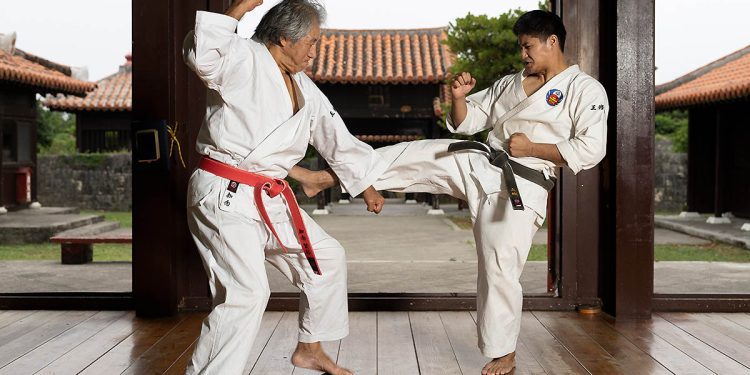The martial arts world encompasses a vast landscape of diverse disciplines, philosophies, and techniques for personal cultivation. From ancient practices originally developed many centuries ago to cutting-edge hybrid systems revolutionising in today’s modern age, martial arts contains multidimensional pathways and schools of thought for those seeking physical, mental, spiritual and social growth. The traditional roots first laid through ancient masters and legendary lineages now intersect with scientific innovations and specialised sporting evolutions to produce ever more effective arts. Seekers looking to better themselves through this journey have a vast array of martial arts to explore, from age-old barehanded combat skills to contemporary practices utilising weaponry and fitness methods. With an open mind and sincere motivation, students can find a martial arts path containing precisely what they need to progress forward in their lives.
Table of Contents
Striking Arts: Weapons of Hands and Feet
Striking-based arts emphasise offensive and defensive techniques utilising the body’s natural weapons – hands and feet. Arts like boxing, kickboxing, and Muay Thai use punches, kicks, knees, and elbow strikes. Others feature open-hand techniques.
Muay Thai: The “Art of Eight Limbs”
Hailing from Thailand, Muay Thai utilises eight contact points, focusing on kicks and strikes. Known as the “Art of Eight Limbs,” Muay Thai allows punches, kicks, knees, and elbows during sparring and competition. Intense full-contact bouts have contributed to its popularity internationally. Many mixed martial artists and kickboxers incorporate Muay Thai into their repertoires.
Karate: Forging Mind, Body, and Spirit
Originating in Okinawa and Japan, Karate emphasises spiritual, mental, and physical refinement through training. Stances load the body to deliver maximum impact from linear punches, strikes, and kicks. Competitive Kumite sparring contests a practitioner’s skills against others. Numerous styles of Karate exist, from high and low stances to hard and soft techniques.
Grappling Arts: Leverage and Submission
Grappling arts focus on off-balancing, controlling, submitting, and pinning opponents on the ground. Disciplines like Judo, Brazilian Jiu-Jitsu, Sambo, and Wrestling feature extensive gripping, stand-up throws, sweeps, and submissions. Position dominance and leverage overcome size and strength disadvantages.
Judo: The “Gentle Way” of Dynamic Throwing
Meaning the “gentle way” in Japanese, Judo emphasises throws, pins, chokes, joint locks, and principles like “maximum efficiency with minimal effort.” Judo originated from Japanese Jujitsu as a sport-focused, competitive evolution. Olympic sport Judo prohibits striking while allowing dynamic throwing techniques like Uchi Mata or O Soto Gari during competitions.
Brazilian Jiu-Jitsu: Efficiency and Strategy on the Ground
Brazilian Jiu-Jitsu (BJJ) originated from pre-World War II Judo in Brazil. The Gracie family tailored techniques for actual combat, emphasising ground fighting proficiency. BJJ uses positioning, chokes, joint locks, and physics to defeat more prominent, vigorous opponents. Intense sparring, known as “rolling”, prepares students for submission grappling tournaments worldwide.
Traditional Arts: Foundations Stand the Test of Time
Many traditional styles provide holistic personal cultivation beyond combat alone. Traditional Karate, Taekwondo, Kung Fu, Aikido, Wing Chun, and other arts integrate mental, spiritual, and physical qualities. Some feature meditation, philosophy, codes of conduct, and simplified self-defence techniques geared toward discipline and character development.
Taekwondo: Beyond Kicks of Korean Heritage
“The way of kicking and punching” in Korean, Taekwondo is known for head-height spinning and jumping kicks. An Olympic sport, Taekwondo uses specialised padding and electronic hog scoring vests pointing systems for competition. While sporting elements continue evolving, Taekwondo disciplines advance traditional philosophies alongside newer competitive development.
Kung Fu: Complex Systems of Chinese Heritage
Chinese Martial Arts like Kung Fu encompass hundreds of diverse practices with varied focuses, including strikes, throws, weaponry, healing practices, meditation, and philosophical elements. Styles like Wing Chun, Hung Gar, Choy Li Fut, Fanziquan, and many others feature unique techniques, tactics, and teachings passed through generations. Advanced masters display great beauty, power, and wisdom through their understanding of Kung Fu.
The world of martial arts stretches across civilisations, old and new. Striking arts deliver potent blows, grappling arts exert merciless submission, and traditional styles forge balanced personal aptitude. With open-minded study, martial practice develops confidence and empowerment, meeting tomorrow’s challenges at their source.
Conclusion:
The martial arts landscape represents human potential, dedication, and expression. As civilisations intersect and evolve, so do their martial arts in the never-ending quest for excellence. With courage and an open mind, the great mysteries and magic within Infinity Martial Arts reveal themselves to the disciplined student. Through training, moving meditation, and aligned goals, martial arts contain something for everyone searching for success on life’s journey. Whether for sportive competition, fitness and joy, Streetwise self-protection, or personal cultivation of the body, mind and spirit – choose your art and embrace the path wholeheartedly.


 Home
Home










